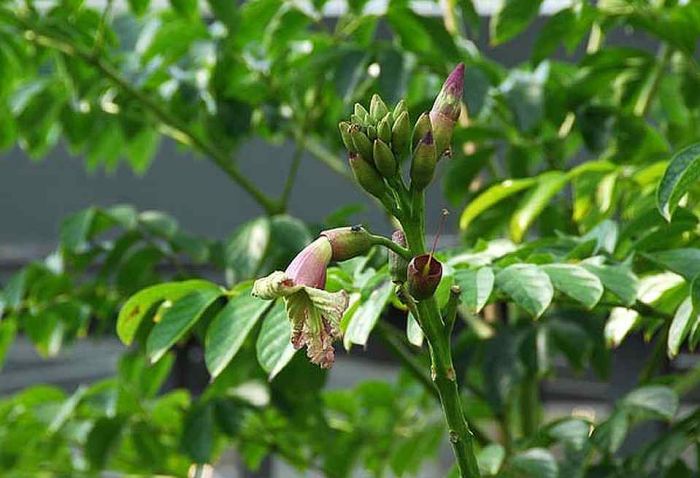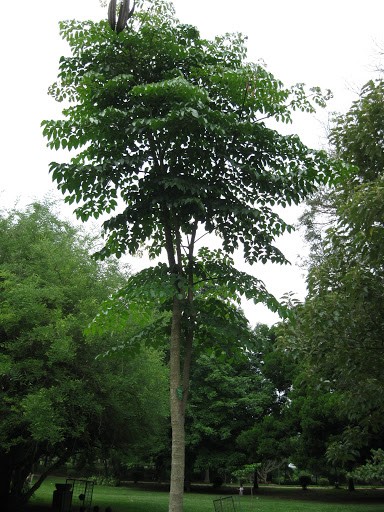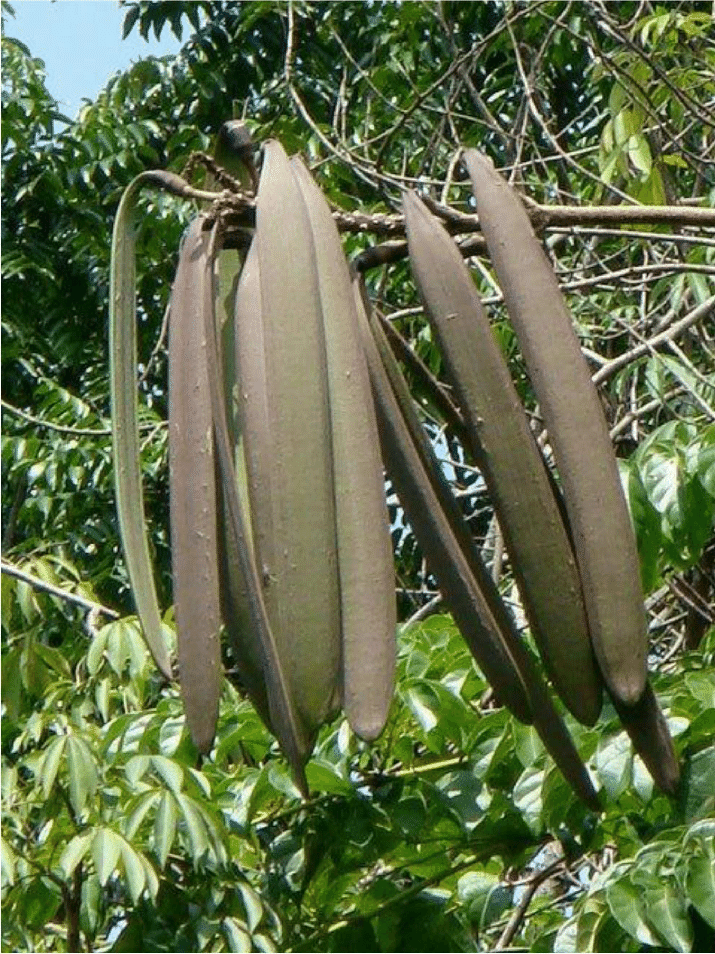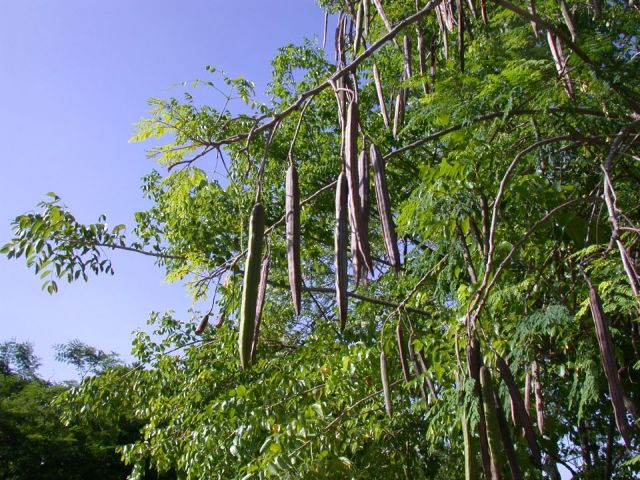BROKEN BONES TREE
Oroxylum indicum
|
Reference No : |
0000006 |
|---|---|
|
Scientific Name : |
Oroxylum indicum |
|
Sinhala Name : |
තොටිල (THOTILA) |
|
Tamil Name : |
பூதபுஷ்பம் மரம் (PUTAPUSPAM MARAM) |
|
Other Common Names : |
Midnight Horror, Oroxylum, Indian Trumpet Flower, Broken Bones, Indian Caper, Tree of Damocles |
|
Synonyms : |
|
|
Plant Family : |
Bignoniaceae |
|
Plant Group : |
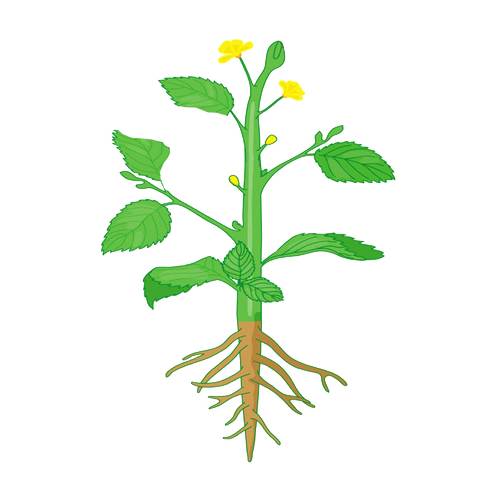 Angiosperms (Enclosed Seed) |
|
Plant Types : |
 Medium Tree
Medium Tree
|
|
Crown Architecture : |
 Open Canopy
Open Canopy
|
|
Plant Categories : |
Canopy plants; Dry Zone Plants; Edible Plants; Flowering Plants; Forest Trees; Fruiting Plants; Herbal Plants; Intermediate Zone Plants; Ornamental Plants; Fast Growing Plants; Sun Loving Plants; Trees; Wild Plants |
|
Native Region(s) : |
Indian Subcontinent |
|
Plant Distribution(s) : |
E. Asia - India, Sri Lanka, Thailand, Malaysia, Indonesia, Philippines, New Guinea, northern Australia, New Caledonia, Vanuatu. |
|
Habitat : |
Lowland woodlands, clearings and waysides. Tropical and subtropical low altitude open forests, roadsides, slopes |
|
Elevation : |
Above sea level up to 1,000 m |
|
Average Height : |
10.00 |
|
Maximum Height : |
20.00 |
|
Root System(s) : |
Tap Root |
|
Propogation(s) : |
By Seeds; By Cutting (Stem) |
|
Medicinal Use : |
Yes |
|
Medicinal Value : |
Stem Bark and Roots for Diarrhoea, Dysentery, Rheumatism, Otorrhoea and Piles in Sinhala Ayurveda |
|
Special Features : |
Young leaves and flowers - raw or cooked Eaten uncooked as a side dish with rice Fruit - cooked. Young fruits are cut into pieces, boiled and eaten with rice The flowers, which open of a night time, have a foetid smell that is attractive to bats |
Foliage |
|
|
Leaf / Habit : |
Evergreen |
|
Leaf Shape : |
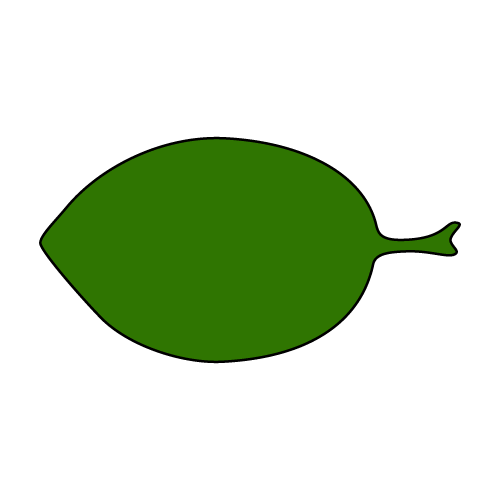 Obtuse shape
Obtuse shape
|
|
Arrangements : |
Simple |
|
Leaf Arrangement : |
 Odd Pinnate Leaf Arrangement
Odd Pinnate Leaf Arrangement
|
Flowering |
|
|
Is Flowering : |
Yes |
|
Blossoms : |
Large, fleshy, and foul smelling with 2.5-cm-long pedicle. Calyx and corolla are about 2.5 cm and 6.5 cm in size, respectively. Stamens are slightly exerted and base of filaments is wooly. |
|
Blooming Season : |
July; August |
Fruiting |
|
|
Bears Fruits : |
Yes |
|
Fruit : |
Follicle, 30–90 cm long and 5–10 cm broad, strap/sword shaped, compressed, and two-valves. Fruiting Time: From December to March Seed: Flattened and winged. |
Maintenance |
|
|
Level : |
Medium |
|
Soil Types : |
Sandy Soil; Loam Soil; Well Drained Soil |
|
Water : |
Medium/Moderate |
|
Sunlight : |
Full |
|
Humidity : |
Average |
Edibility |
|
Legal Status |
|
If you find any errors, please email us at info@biophilia.lk
